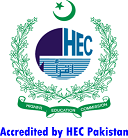THE RESUSCITATION OF ORTHODOX CHRISTIANITY AND TSARIST SYMBOLISM IN POST-SOVIET RUSSIA: AN ANALYSIS
Abstract
It has been a generation since the end of Bolshevik rule in Russia. In the last 25 years, we have seen a fervent urgency to reconnect contemporary Russian society with its pre-Bolshevik past. This perseverance has been manifested by the appearances of monuments that hark back to the days of monarchic Russia. The Russian Orthodox Church has been at the forefront in all this rejuvenation. Under increasing state patronage, it has undertaken efforts to reshape the national trajectory. In addition, Tsarist regalia abounds state architecture. This symbolism carries deep signification. It communicates motifs that are essential to understand Moscow’s diplomatic posturing. The conservatism enshrined within these expressions challenges the liberal consensus that has been the order of the day since the end of the Cold War. Furthermore, this article asserts that Russian nationalism is inextricably linked with Orthodox Christianity. There is no place for pagan allegory in Russian identity.
Key words: Orthodox Church, Tsarism, Symbolism














